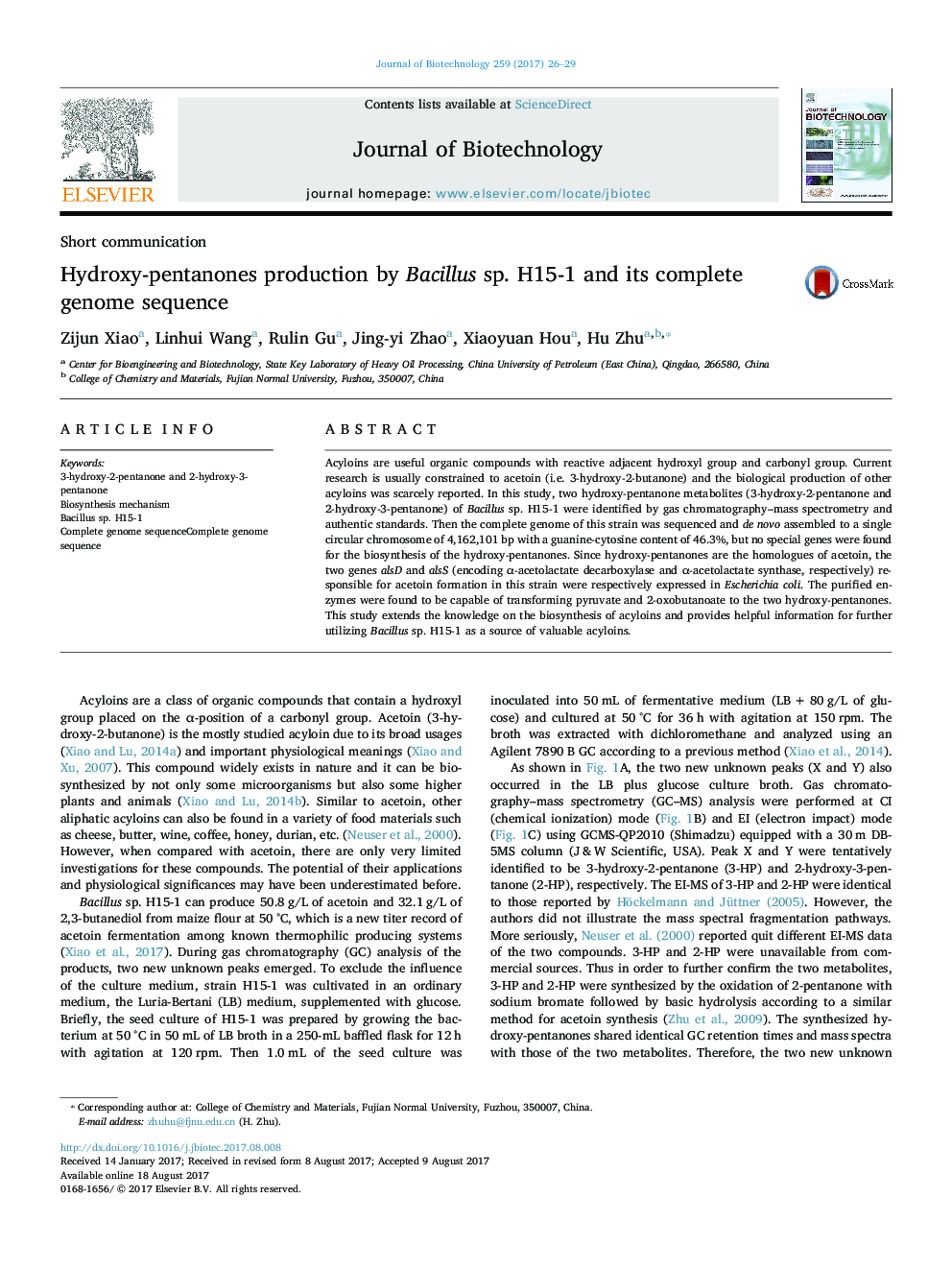| Article ID | Journal | Published Year | Pages | File Type |
|---|---|---|---|---|
| 6452001 | Journal of Biotechnology | 2017 | 4 Pages |
â¢Two unknown metabolites were produced by a new thermophilic Bacillus isolate.â¢The two unknown metabolites were identified to be hydroxy-pentanones.â¢The complete genome of this Bacillus strain was sequenced.â¢ALS and ALDC were found to be capable of transforming pyruvate and 2-oxobutanoate to the two hydroxy-pentanones.
Acyloins are useful organic compounds with reactive adjacent hydroxyl group and carbonyl group. Current research is usually constrained to acetoin (i.e. 3-hydroxy-2-butanone) and the biological production of other acyloins was scarcely reported. In this study, two hydroxy-pentanone metabolites (3-hydroxy-2-pentanone and 2-hydroxy-3-pentanone) of Bacillus sp. H15-1 were identified by gas chromatography-mass spectrometry and authentic standards. Then the complete genome of this strain was sequenced and de novo assembled to a single circular chromosome of 4,162,101 bp with a guanine-cytosine content of 46.3%, but no special genes were found for the biosynthesis of the hydroxy-pentanones. Since hydroxy-pentanones are the homologues of acetoin, the two genes alsD and alsS (encoding α-acetolactate decarboxylase and α-acetolactate synthase, respectively) responsible for acetoin formation in this strain were respectively expressed in Escherichia coli. The purified enzymes were found to be capable of transforming pyruvate and 2-oxobutanoate to the two hydroxy-pentanones. This study extends the knowledge on the biosynthesis of acyloins and provides helpful information for further utilizing Bacillus sp. H15-1 as a source of valuable acyloins.
